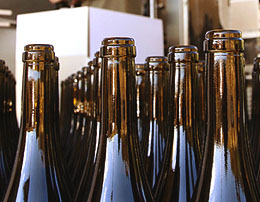 Bottling day is here! 1 month of waiting is finally over! As excited as I was to bottle my wine, I still wanted to make sure I followed the winemaking instructions and get through everything as thoroughly and correctly as possible.
Bottling day is here! 1 month of waiting is finally over! As excited as I was to bottle my wine, I still wanted to make sure I followed the winemaking instructions and get through everything as thoroughly and correctly as possible.
The first thing I did was I siphoned the wine into my primary fermenter. Now, the instructions had said to siphon into a carboy, but just like last time, I only had a primary fermenter available and not a second carboy. I also liked the idea of using the primary fermenter for the bottling the wine instead of a carboy, as getting the wine out through the spigot seemed a lot cleaner and easier to me than attempting to siphon the wine into each wine bottle.
One thing I did not do, which was recommended in the winemaking instructions, was that I did not filter my wine prior to bottling. First of all, I didn’t have a wine filter, nor did I have any of the proper equipment to do such filtering. Second and lastly, my wine had become very clear after the stabilization and clarification process, so I didn’t feel like it even needed to be filtered prior to bottling.
Cleaning and sterilizing the wine bottles was actually pretty easy for me this first time, as I had purchased brand new wine bottles from E. C. Kraus, therefore other than a little cardboard dust, they were very clean already. I just rinsed them several times in very hot water, then immersed them in the cleaning solution for a few minutes. Afterwards, I rinsed them again several times, this time with cold water, and then lay them upside down in the dish rack in the kitchen (on some paper towels). After this, I realized a bottle tree would be a great investment. Put that on the list!
Once the wine bottles were dry, I set myself up underneath the primary fermenter and slowly opened the spigot to fill up one wine bottle at a time. As far as the corks were concerned, I read some mixed reviews about soaking them versus not soaking them prior to use, and ultimately I decided not to soak them. It sounds like the soaking of the corks is an old technique that was carried over from home winemaking past, and that it’s really not necessary anymore with all the advances the field has made. In fact, commercial wineries don’t soak their corks, so why should I? What I did instead was I quickly rinsed the corks in water to get any dust off of them, and then just pushed them into the wine bottles by hand once the bottle was filled with wine. I was able to push in the corks by hand, since these corks were the kind that were attached to a little plastic cap on the top, thus making hand corking very easy.
Here is a short clip of me filling my first bottle from the fermenter—you’ll notice a lot of bubbles in there….I did get better at not having it so agitated as the bottling process wore on:
After the bottling process was complete, I ended up with 23 and 1/3 bottles of wine. If you recall, I did end up losing some wine earlier on in the process due to human error (i.e. I forgot to make sure the spigot in the primary fermenter was in the off position!), but still, I was very happy with the yield that I got. Every single bottle appeared to me to be as clear as the bottle before, so I’m pretty certain I did things correctly during the clarification and stabilization phase!
After two days, I placed the wine bottles on their sides in a more long term storage position, and then left town for two weeks. The corks seemed to be holding tight when I left, so hopefully when I come home, I do not come home to a pool of Pinot Grigio all over the floor!
All in all, I have to say this first time making homemade wine was a success! Only time will tell how it actually tastes, however, just looking at it, it appears as though I did most things correctly. I’m looking forward to making my next batch of homemade wine!
——————————————————————————————————–
 My name is Leigh Erwin, and I am a brand-spankin’ new home winemaker! E. C. Kraus has asked me to share with you my journey from a first-time dabbler to an accomplished home winemaker. From time to time I’ll be checking in with this blog and reporting my experience with you: the good, bad — and the ugly.
My name is Leigh Erwin, and I am a brand-spankin’ new home winemaker! E. C. Kraus has asked me to share with you my journey from a first-time dabbler to an accomplished home winemaker. From time to time I’ll be checking in with this blog and reporting my experience with you: the good, bad — and the ugly.

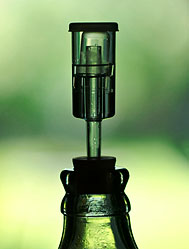 During the 2nd racking of the juice. I have had my Senior Air-Lock sometimes just stop working. What cause’s this? I use water in my Air-Lock’s.
During the 2nd racking of the juice. I have had my Senior Air-Lock sometimes just stop working. What cause’s this? I use water in my Air-Lock’s.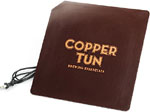
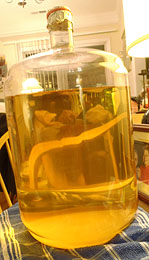 Day 22! Otherwise known in the
Day 22! Otherwise known in the  Next, I shook up and added the pouch of
Next, I shook up and added the pouch of 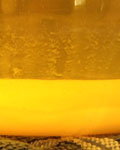 By the end of the night, I was starting to notice the wine clearing up quick a bit already. I wasn’t expecting it to work its magic this fast, but apparently it does! One thing I found really cool was that the Kieselsol interacting with the proteins in the wine formed a white precipitate, which then settled down to the bottom of the carboy. I knew the clarification step had to be working properly, as the wine was starting to get much clearer than it had been at any other stage, and the proteins that had been clouding up the joint were obviously now laying at the bottom of the carboy. I believe my exact words to my fiancé were: “Look, honey! It’s science! Tasty, tasty science!”. Both of us being scientists, with strong chemistry backgrounds, it was really fun talking to each other about the chemistry behind what we were witnessing in the carboy.
By the end of the night, I was starting to notice the wine clearing up quick a bit already. I wasn’t expecting it to work its magic this fast, but apparently it does! One thing I found really cool was that the Kieselsol interacting with the proteins in the wine formed a white precipitate, which then settled down to the bottom of the carboy. I knew the clarification step had to be working properly, as the wine was starting to get much clearer than it had been at any other stage, and the proteins that had been clouding up the joint were obviously now laying at the bottom of the carboy. I believe my exact words to my fiancé were: “Look, honey! It’s science! Tasty, tasty science!”. Both of us being scientists, with strong chemistry backgrounds, it was really fun talking to each other about the chemistry behind what we were witnessing in the carboy. Why do some of my wines turn out with a woody smell or taste?
Why do some of my wines turn out with a woody smell or taste?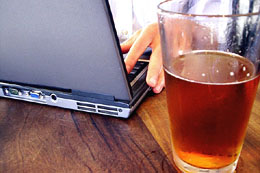 Picking up where we left off in
Picking up where we left off in 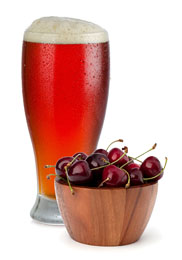 In October,
In October, 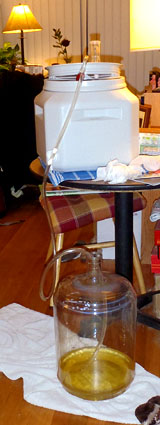 I’ve made it to Stage 3 in the home winemaking process without any problems (that I am aware of as yet anyway! Ha!). It’s been nearly 3 whole weeks since I got started with the
I’ve made it to Stage 3 in the home winemaking process without any problems (that I am aware of as yet anyway! Ha!). It’s been nearly 3 whole weeks since I got started with the  The only thing that might be better than a good homebrewed beer is good food made with homebrewed beer. Put them together this winter for the ultimate homebrew creation!
The only thing that might be better than a good homebrewed beer is good food made with homebrewed beer. Put them together this winter for the ultimate homebrew creation!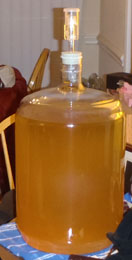 Man oh man, for someone who is used to nearly instant gratification, waiting 12 days for a wine to go through secondary fermentation is killer! Actually, it’s not that bad, but man, am I really looking forward to the next step or what!
Man oh man, for someone who is used to nearly instant gratification, waiting 12 days for a wine to go through secondary fermentation is killer! Actually, it’s not that bad, but man, am I really looking forward to the next step or what!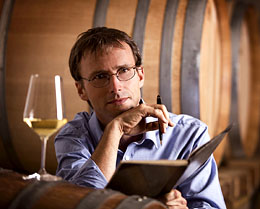 In several earlier posts, we introduced a few home winemaking terms that you may or may not be familiar with. There are many terms to learn in home winemaking, and this post, like all the previous posts, gives you a short introduction to a few of those terms to help you get started in home winemaking, or perhaps brush up on some of the terms you may not have seen in a while. Today we’ll explore some of the lesser known terms used throughout the winemaking world.
In several earlier posts, we introduced a few home winemaking terms that you may or may not be familiar with. There are many terms to learn in home winemaking, and this post, like all the previous posts, gives you a short introduction to a few of those terms to help you get started in home winemaking, or perhaps brush up on some of the terms you may not have seen in a while. Today we’ll explore some of the lesser known terms used throughout the winemaking world.